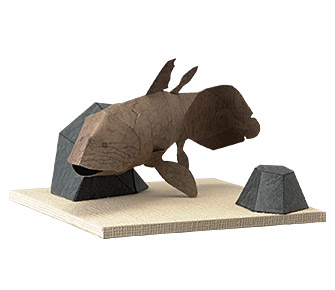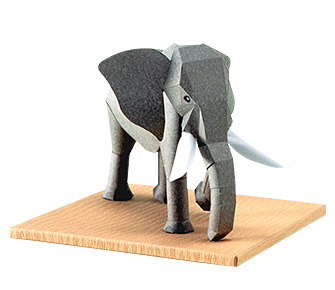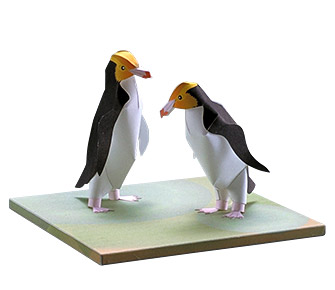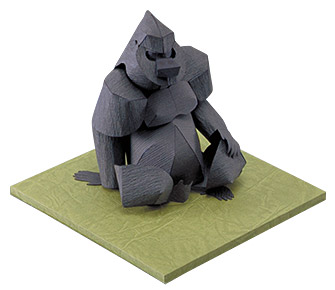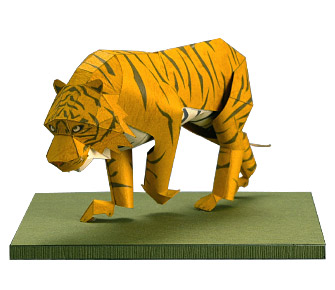Coelacanth
Papercraft kit : Nicknamed a living fossil, the coelacanth prehistoric fish.
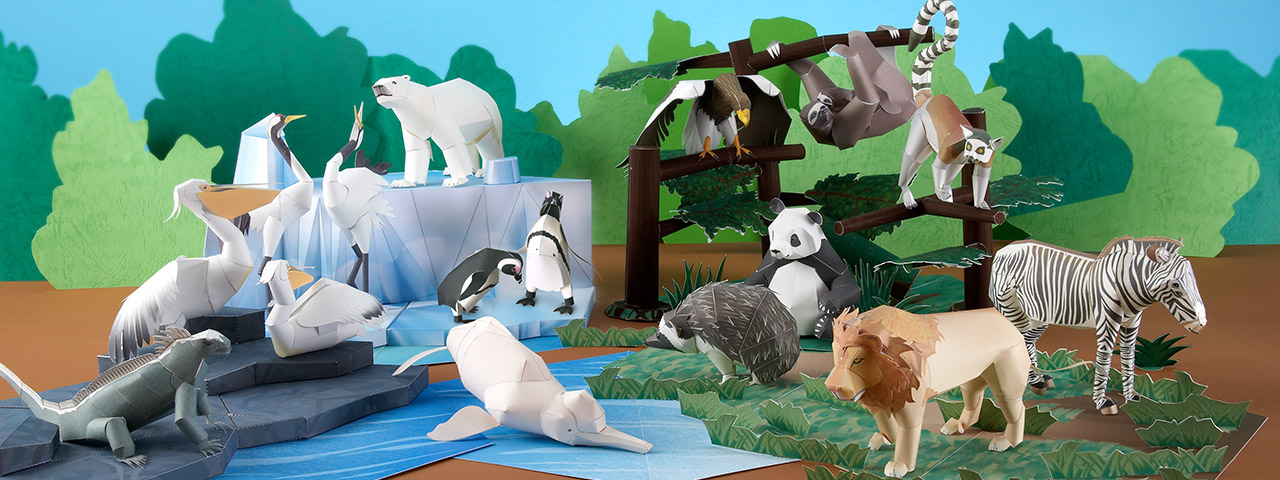
The coelacanth had been long believed, with the excavation of its fossils, to have become extinct seven thousand years ago. Since the recent discovery of a living coelacanth, research on the ecology and the process of animal adaptation has been continued throughout the world. The species is classified as “Critically Endangered [CR]” in the Red List.
Assembly instructions for the Paper Craft Model of the Coelacanth, widely known as a “living fossil”, may be downloaded from this website. A photo image of a completed model may be downloaded as well.
Download - Parts sheet & InstructionsThis data was released in February, 2001.
Coelacanth - Animal Guide

- Coelacanth - Maisey
- Latimeria chalumnae
- Length: 150 cm (approximately 59 in.) / Weight: 60 kg (approximately 132 lb.)
- 2016 Edition of the RED LIST categories : Critically Endangered [CR]
The coelacanth first appeared in the middle of the Devonian period, somewhere between 360 million to 80 million years ago. The species belongs to a prehistoric fish of the order Crossopterygii, which was abundant approximately 240 million years ago. It was long believed that the species had become extinct about 80 million years ago. However, in 1938, a living coelacanth was captured off the eastern coast of South Africa, proving it still existed.In the 1950s, the species became well known worldwide as a "living fossil".
The body of the coelacanth appears bluish black due to the color of its large hard scales, and has off-white spots all over its body. As seen in the coelacanth, the order Crossopterygii is easily characterized by the unusual shape of its fleshy, lobed-fins (including pectoral fins, pelvic fins, anal fins and dorsal fin), which are absent in other kinds of fish. These fins function with the help of muscles and bones that look like supports developed at the base of each fin. Some biologists say that this structure shows the potential to develop into the legs of a four-legged animal. Many prehistoric fish breathed not only with gills but also with lungs. Moreover, their lungs seemed to have functioned in connection with the air bladder. It is supposed that they had an ability to breathe outside the water to some degree. There is a theory that certain species of the Crossopterygii order went ashore and became the ancestors of amphibians such as frogs, newts and salamanders. However, the moderng? coelacanth breathes only with gills.
The air bladder of the species is a storage area for fat and has no relation to respiration. It rather serves as a pressure adjustment organ for the species, as seen in most fish.
Anatomical research has verified that the species is viviparous and feeds on fish and squid.
Habitat
Up until the middle of the 1990s, approximately 200 coelacanths were caught and the stuffed specimens and replicas have been displayed at various museums throughout the world as well as those in Africa. Many of the species have been caught, all between southeastern Africa and Madagascar, and especially near the Comoros Islands. In 1987, German researchers succeeded in filming several coelacanths at the ocean floor at a depth of 100 meters (approximately 110 yards.). This film verified that the species lives in caves of the ocean basin and shows how the species uses each fin when swimming.
In 1998, a fish called "raja laut", meaning the "king of the sea", was caught off Manado of Sulawesi Island (in Indonesia) 10,000 kilometers (approximately 6,250 miles) away from the Comoros Islands. The fish was identified as a coelacanth and was officially classified as a separate species of the coelacanth in 1999. (The zoological name of the species is Latimeria menadoensis). With this, another "living fossil" was discovered.

About Red List
The Red List is the material prepared by IUCN (International Union for Conservation of Nature) classifying various threatened wild animals of the world and reporting their present habitat status.
The List evaluates the extinction risk level of each individual species from a biological viewpoint, but it possesses no legal power to enforce regulations concerning threatened species. The Red List is broadly employed as fundamental information in advancing the preservation of threatened wild animals.
Referring to the original Red List, the Environment Agency of Japan has compiled the Japanese edition of the List listing threatened taxa inhabiting Japan.
| Extinct | EX | No known individuals remaining. |
|---|---|---|
| Extinct in the Wild | EW | Known only to survive in captivity, or as a naturalized population outside its historic range. |
| Critically Endangered | CR | Extremely high risk of extinction in the wild. |
| Endangered | EN | High risk of extinction in the wild. |
| Vulnerable | VU | High risk of endangerment in the wild. |
| Near Threatened | NT | Likely to become endangered in the near future. |
| Least Concern | LC | Lowest risk. Does not qualify for a more at-risk category. Widespread and abundant taxa are included in this category. |
| Data Deficient | DD | Not enough data to make an assessment of its risk of extinction. |




